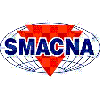When you decide it’s time to part with your collection of say, baseball cards, it’s usually not too difficult to find a buyer.
If the collection is any good, dealers will often buy the whole thing, knowing that they’ll be able to make much more selling it off card by card. Or you can place an ad in a collector magazine or try online auction sites such as eBay.
But what if your collection is more unusual? You could try to make money off it: A guy in Ohio made a museum out of his collection of pencil sharpeners.
Donald Benz’s collection isn’t quite as rare — or weird — as that, but it’s definitely a niche. The West Seneca, New York, resident has about 125 sheet metal layout manuals dating back to the 19th century.
Who’ll want to buy those?
That’s the question the 84-year-old retired sheet metal worker is trying to answer. He’s got six or seven boxes of books on sheet metal forming from 100-year-old hardcover volumes with names like Sheet Metal Shop Drawing to spiral-bound booklets on “pattern bending.” He’s hoping somebody will want to add them to their library.
Benz says he compiled the collection over the last 60-plus years since he started a four-year apprenticeship with Sheet Metal Workers union Local 71 in Buffalo, New York.
Starting small
“It was a gradual thing,” he says. “It wasn’t a real effort, although I did put one ad in a sheet metal journal one time.”
While an apprentice, he won third place in a national sheet metal works competition, besting close to 800 other contestants, he says. After becoming a journeyman sheet metal worker in 1953, he enlisted in the U.S. Navy, where he performed metalwork on ships stationed on the Great Lakes.
After his military service, Benz found employment with a number of Local 71-affiliated sheet metal contractors, working on projects such as factories, flour mills, hospitals and educational structures in the upstate New York region.
But for most of his life, Benz worked for the Buffalo Board of Education performing HVAC construction maintenance and sheet metal work. For several years, he would also teach sheet metal skills to night-school students.
During this time, he kept growing his collection of industry manuals.
“As I moved about, I’d stop in bookstores and look at the technical section and pick up one or two along the way,” he says.
Whether he was on vacation in Florida or visiting Canada, he would check out local bookstores. Benz became such a frequent customer of some shops, the owners would set aside sheet metal works books they thought he’d be interested in.
And co-workers would frequently give him textbooks, he adds.
“I even got some from a fellow that was from Hungary. I think there are seven of them that are in the Hungarian language,” Benz says. “I can follow the graphics in them but the language I certainly can’t read. But they’re interesting.”
Not just for show
Unlike some people who collect just to show off their treasures, Benz says his books weren’t just to decorate his library.
“I read most of them,” he says.
Some of the oldest manuals discuss skills that sheet metal workers haven’t had to know for years, Benz points out.
“I’ve got one old book that’s got recipes for coloring solder,” he says. “Of course way back they didn’t have all the access (to materials). It was like going to an old drugstore where they compounded the medicines. Tin knockers or tinsmiths would have to do that in their shops.”
Benz says his favorite sheet metal forming textbooks in his collection are those written by Joseph J. Kaberlein. His books on triangulation and air conditioning were very useful, he adds.
“He was always right to the point,” he says, adding, “It was explained so you could grasp it. I really like them.”
Kaberlein’s books also had great illustrations.
“His methods were so concise, you could almost do (the ductwork fabrication) just by looking at the drawings rather than reading the brief descriptions of the maneuvers,” Benz says. “And he had everything from the very simplest … to the ones that were really so invovled that you’d look at it in the beginning and say, ‘I’m never going to be able to lay this fitting out.’ ”
His oldest book, Benz says, is probably an 1825 volume on Euclidian geometry. While not strictly a book on sheet metal forming, some of the principles attributed to the ancient Greek mathematician Euclid are applicable to the industry, Benz says.
The most recent book in is collection in from 1990 — around the time Benz decided to retire.
Now Benz is looking for a new home for the collection — all seven boxes and 180 pounds of it. He knows shipping such a large and heavy collection won’t be cheap. Anyone interested in learning more about his collection can email him at bbz9222@roadrunner.com.
For reprints of this article, contact Jill DeVries at (248) 244-1726 or email devriesj@bnpmedia.com.











